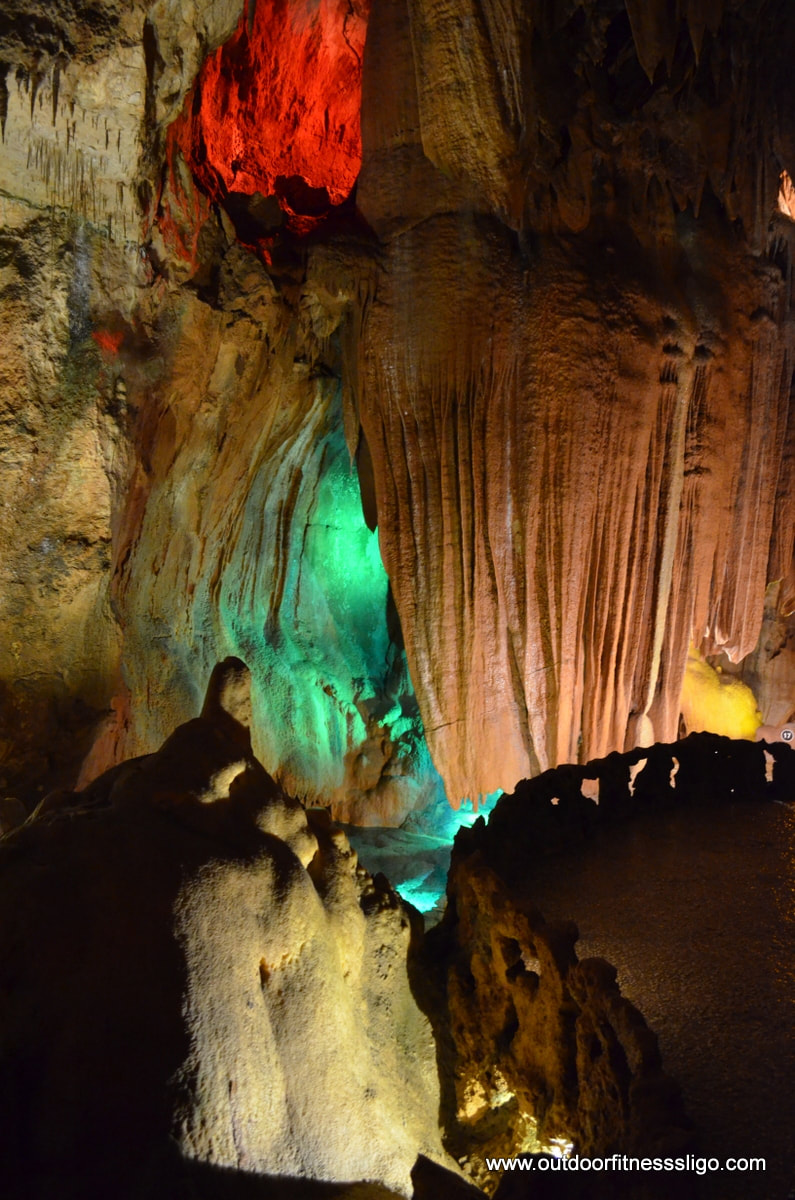|
We had planned a visit to the Grutas de Mira de Aire, Portugal's largest show caves which are located in Parque Natural das Serras de Aire. The area is a mix of limestone hills and crags. The farmland, which is divided by 1000's of stone walls, are mainly planted with olive trees. Reason for that is that all the water disappears quickly into the limestone making it barely impossible for plants to grow in this hot climate. The area has many showcaves, but the largest ones are de Mira de Aire caves which are located in the town of Mira de Aire. Upon arrival, you wouldn't expect the location to be home to approx. 11km of caves, but that is probably because they are underground. What we mean is that these caves are right in the middle of the town between many houses, and it is only the car park and restaurant which gives it's location away. The building where you purchase the tickets is also a tourist shop and bar. Around the building is also a small zoo (birds/ rabbits/ donkey/...) which keeps the kids occupied when you are waiting for the next tour to commence. After having purchased the entrance tickets (Adult: €6.60 , under 11's: €3.90 , under 5's: free) , we waited 20 minutes until it was our turn to descend into the caves. Note: The ticket can also be purchased with access to the local aquatic park, this for a small additional fee. The tour starts with a film about the area and cave network, and is given in Portuguese with English subtitles. After the short introduction, the long descend into the caves started. Currently, the explored cave network stands at 11km, but only 600m is open to the general public. The caves, which are classified as one of the "7 natural wonders of Portugal" were discovered on the 27th July 1947 when 4 locals decided to unblock the cave's entrance to look for water. The caves officially opened to the public in 1974. In total, 683 steps bring you down the cave to a depth of 110m . There are 3 distinctive stages within this cave, 2 of which are open to the public. The first one is the fossil cave on the upper level, an area which is marked by stalagmites and stalactites The second area is the semi-active cave which is still prone to potential flooding. The third one is the submerged part of the cave which is closed to the public. There are some interesting rock formations along the route with names like spagetthi, jellyfish, octopus gallery,... In the Octopus gallery, you will find a door which brings you to the wine cellar where wine events take place. It is because of the caves internal temperature of 17 degrees Celcius which is maintained all year round that the cave is the ideal location to store wine. At the end of the tour, fountains bring you towards the 2 lifts which bring visitors back to the surface from where a short walk is required to reach the car park again. But before walking back, enjoy the stones, rocks and fossil displays in the small museum.
0 Comments
Leave a Reply. |
�
About the AuthorWe are Peter & Dolores De Bie. We love the great outdoors, discovering new parts of the world and writing about our adventures along the Wild Atlantic Way and further afield Categories
All
|
Contact us |
Where are our visitors from |
copyright © 2024 www.outdoorfitnesssligo.com
©Website design by Outdoor Fitness Sligo
©Website design by Outdoor Fitness Sligo









 RSS Feed
RSS Feed
